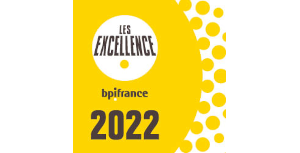“For the benefit of all mankind”
Trademark law and the conquest of space
On July 4, 2022, the European Space Agency (‘ESA’) officially launched the operations of the new European Center for Space Economy and Commerce (‘ECSECO’)[1]. Modeled on the European Center for Space Law (‘ECSL’), the objectives of ECSECO – which is expected to be governed from Vienna, the headquarters of the European Space Policy Institute – are to constitute a gateway for exchange between economists, scientists, engineers and lawyers involved in different aspects of the space economy, whether from the private or public sector, or from academia.
The Centre’s missions will be to organize conferences, workshops, encounters, working groups and collaborative research, providing a multi-disciplinary gateway to players in the space industry, under the aegis of the ESA[2].
At a time when private sector initiatives in the space industry continue to grow, and France, acting through its National Centre for Space Studies (‘CNES’), has just signed the "Artemis Accords” for governing space exploitation and exploration, and in particular lunar exploration[3], can the operations of this new centre enable the formulation of proposals to provide a legal framework for activities in space having a commercial dimension, in particular as regards intellectual property rights? (It being understood, of course, that such an eminently political question goes well beyond the bounds of legal discussion – and moreover the legal sub-committee of the United Nations Committee dedicated to the peaceful uses of space is trying to conduct its own studies[4].)
Of course, the question of the existence, the protection and the utilization of intellectual property rights that come into being in the course of space industry work, whether on earth or beyond its bounds, has already been raised and referenced in both International treaties and in legal literature. Nevertheless, such consideration has naturally been mostly from the perspective of patent law. Questions of copyright and trademark law may have been raised, but they do not seem to have been settled.
The existing corpus
Although many treaties and agreements have arisen since the inception of space exploration in the 50’s and 60’s, few contain provisions relating to intellectual property. Among the most significant are those adopted under the aegis of the United Nations, which set out the broad principles that apply –foremost of which it has been agreed that:
- space exploration is carried out in the in the interest of all mankind,
- exploration and scientific research are to be conducted freely and on an equal footing between all States,
- but space, the Moon and celestial bodies form part of the “common heritage of mankind” and cannot be subject to national appropriation, by any means whatsoever[5].
International cooperation is thus required, as shown by the signature, on January 29, 1998, of the agreement for cooperation over the International Space Station (‘ISS’) – concluded between, the ESA, Canada, the United States, Japan and Russia[6]. This agreement governs the activity conducted on the ISS and probably for the first time contains an article specifically dedicated to intellectual property.
Article 21 of this agreement thus stipulates that “subject to the provisions of this Article, for purposes of intellectual property law, an activity occurring in or on a Space Station flight element shall be deemed to have occurred only in the territory of the Partner State of that element's registry, except that for BSA-registered elements any European Partner State may deem the activity to have occurred within its territory.”
it moreover being agreed that “with respect to an activity occurring in or on an BSA-registered element, no European Partner State shall refuse to recognize a license for the exercise of any intellectual property right if that license is enforceable under the laws of any European Partner State, and compliance with the provisions of such license shall also bar recovery for infringement in any European Partner State.”
The determining factor, as regards inventions or creations made on the ISS, is thus the registration of the flight element on/in which it was made, this making it possible to determine the applicable law and thus the conditions of ownership, protection and utilization. It should be noted that the most recent "Artemis accords" provide that their execution can entail the conclusion of other protocols and implementation agreements, particularly with regard to "other provisions necessary for the performance of cooperative activities, including those related to liability, intellectual property and the transfer of goods and technical data.”[7]
Although these general guidelines may be necessary in the context of international cooperation involving scientific research and R&D activities, they nevertheless only address the primary concern of space exploration: to provide a framework for scientific research and to regulate defense and military activities, for the benefit “of all mankind”. Other texts, of course, govern the utilization of satellites too. However, the rising numbers of private participants, only some of whom are involved with what is commonly called space tourism, seems to indicate that the legal corpus needs to be enlarged to anticipate and govern such future new commercial operations – and thus address that other part for intellectual property not specifically dealt with by the agreements: trademark law.
The corpus to define
In the words of the Director of CNES, the “space ecosystem [...] is radically changing. [...] The current ferment in France and elsewhere in the space industry cannot be ignored. Every week, new entrepreneurs knock on CNES’s door”[8]. In this context of “new space” – a movement initiated in the United States with the growing of privatization of NASA’s programs[9] – ought one to avoid addressing trademark law, among the other major issues of international law?
Take, for example, the project – currently stalled – of the American start-up Orion Span Inc. which announced in 2018 that it was working on the creation of a private space station to be operated as a luxury hotel (which it planned to place in orbit as of 2021). This orbital hotel was to bear the name "AURORA STATION", and an application for trademark registration of that sign had indeed been filed in the United States[10]:
This trademark application has been abandoned today, given that its applicant failed to reply to the objection issued by the US Office, but continuation of its examination and its grant would have raised several questions which are still completely undecided, in particular:
- can rights conferred by a trademark registered in the United States, or in any other country/jurisdiction in the world, extend to outer space, when one of the primary principles of any intellectual property right is its territoriality?
- - if that were to be the case: what prior rights would have to be taken into consideration (only United States trademarks? any other trademark / right in any other jurisdiction intended for use in space? which language of the public would be relevant?) and on with which territories could acts of copying or imitation constitute infringement? Which authority or jurisdiction would be competent to rule on the matter?
- As specimens showing use, would the USPTO have accepted evidence of exploitation in outer space solely and not, as such, on US territory? (it being noted that this trademark was only directed to the space hotel industry and not transportation for accessing the private station, and that part of the objection raised by the office concerned the date of first use claimed in the application as filed, on the grounds that the information provided to the examiner concerned future use and not the start of existing use, whereas the application could have been made on the basis of an intention to use)
- in addition to the requirement in the United States, as in a certain number of other countries, to provide evidence of the use for a protected sign to maintain such protection, what, over the lifetime of the trademark, would be the relevant territory and public for proving that it had been the subject of genuine use? Or that it had acquired a reputation?
Although the Orion Span Inc. project has not (so far) seen the light of day, it is to be noted that, in partnership with NASA, the United States company Axiom Space sent a crew of four to stay on the ISS for a fortnight last March/April, for the first time on an entirely private basis[11]. This company has a certain number of trademarks to its name, most of them filed and/or registered in the United States but also in Canada and various countries in the world by means of international trademarks. The same applies for SpaceX, Virgin Galactic or Blue Origin (the trademarks of whom however cover a broader spectrum of jurisdictions, in particular China).
Of course, these questions are not limited to the space tourism sector, but arise for any existing or future trademark regardless of the activity covered, whenever extra-territoriality is involved. To cite just one project among many others, the Luxembourg company Manaa Electric is working on the production of solar panels which it hopes one day to manufacture and install on the moon, and which could in the future perhaps supply the base which NASA may set up there[12]. Can a national trademark cover activities conducted on the Moon?
Among the avenues that could be explored, the idea of incorporating outer space into the international trademark system is often evoked as a first step to regulate and standardize the protection stage. It could be imagined to have ad hoc management of a register and its trademarks by the World Intellectual Property Organization (‘WIPO’) or an extension specific to each national designation to cover activities in outer space.
National handling on a case-by-case basis cannot be ruled out, modeled upon what may already exist in relation to patents, in France or in the United States. Article L.L611-1 of the Intellectual Property Code indeed expressly states that inventions patentable at the French IP Office can include “inventions made or used in outer space including on celestial bodies or in objects in space placed under national jurisdiction [...]”.
Although the present analysis has concentrated on trademark law, the question of copyright arises just as much – though indubitably in a different context, and which could perhaps entail an adaptation or extension of the scope of the Berne Convention . Do Thomas Pesquet, best known among French astronauts, or Samantha Cristoforetti, the Italian astronaut from ESA, have full rights over the photographs they take from the station, which they publish on social media? What territory should be considered to determine the country of first disclosure?
The voyage towards the solution to such questions – assuming they can actually be answered – will doubtless be a long one. In the meantime, you can always send your name to Mars, thanks to NASA who is offering to send it on a trip to the red planet on board a memory stick contained in the module of its next mission[13].
Nelly Olas is an Intellectual Property Attorney. Before joining the firm Santarelli in 2015, she worked as counsel – admitted to the bars of Paris and New York. She has more than 15 years of experience, and is the holder of a D.E.A. in literary, artistic and industrial property from Paris 2 – Assas University, as well as an LL.M. in Intellectual property from the University of Cardozo in New York.
N.B. The title of this article is inspired by the text of the treaties and principles governing the activities of States in the exploration and use of outer space and related resolutions adopted by the General Assembly of the United Nations, cf. https://www.unoosa.org/pdf/publications/st_space_11rev2E.pdf. Reference is also made, of course, to what was written on the plaque of Apollo 11 which landed on the moon in July 1969: “Here Men From The Planet Earth First Set Foot Upon The Moon, July, 1969, AD. We Came In Peace For All Mankind" [1] See the ESA announcement of March 25, 2022: https://commercialisation.esa.int/2022/03/creation-of-the-european-centre-for-space-economy-and-commerce-ecseco/ or the dedicated LinkedIn page https://www.linkedin.com/company/european-centre-for-space-economy-and-commerce/
[2] There are currently 22 member states of the ESA: Austria, Belgium, the Czech Republic, Denmark, Estonia, Finland, France, Germany, Greece, Hungary, Ireland, Italy, Luxembourg, Netherlands, Norway, Poland, Portugal, Romania, Spain, Sweden, Switzerland and the United Kingdom; as well as a number of partner countries via cooperation agreements. It is independent of the European Union, although there are framework agreements between the two organizations.
[3] See the CNES press release of June 7, 2022: https://presse.cnes.fr/en/france-signs-artemis-accords-and-joins-international-space-exploration-programme
[4] Cf. in particular L’exploitation des ressources de la Lune au coeur de la nouvelle diplomatie américaine [The exploitation of lunar resources at the heart of the new US diplomacy] by Philippe Achilleas and Isabelle Sourbes Verger : https://hal.archives-ouvertes.fr/hal-03513372/document
[5] Principles laid down in the treaties and principles governing the activities of States in the exploration and use of outer space and related resolutions adopted by the General Assembly of the United Nations, cf. https://www.unoosa.org/pdf/publications/st_space_11rev2E.pdf.
[6] Agreements published in France by decree No.°2005-1498 of November 29, 2005: https://www.legifrance.gouv.fr/jorf/id/JORFTEXT000000609592, cf. also https://www.state.gov/wp-content/uploads/2019/02/12927-Multilateral-Space-Space-Station-1.29.1998.pdf
[7] The Artemis Accords can be accessed on the NASA website: https://www.nasa.gov/specials/artemis-accords/index.html, translations, including into French, also being available https://www.nasa.gov/specials/artemis-accords/img/Translated-Versions-of-the-Accords.pdf
[8] Interview with Philippe Baptiste, Director of CNES, which appeared in Les Echos of May 10, 2022: https://www.lesechos.fr/industrie-services/air-defense/le-cnes-ne-peut-faire-abstraction-du-bouillonnement-du-new-space-1405860
[9] CF. in particular Le New Space ou la privatisation des ambitions spatiales des États – Réflexions sur le droit de l’espace à l’heure de l’innovation entrepreneuriale [New Space or the privatization of state ambition regarding space – reflections on rights in space at a time of entrepreneurial innovation] by Philippe Achilleas https://www.persee.fr/doc/afdi_0066-3085_2016_num_62_1_5036
[10] Application No. 90508393 filed at the USPTO on February 3, 2021 by Orion Span Inc., in service class 43 for "space hotel for space tourism". The application has now been deemed abandoned since the applicant failed to reply to the objection issued by the Office.
[11] Cf. for example https://blogs.nasa.gov/kennedy/2022/04/25/axiom-mission-1-crew-safely-splashes-down-near-florida/; https://www.futura-sciences.com/sciences/actualites/vols-habites-equipage-axiom-1-enfin-revenu-terre-87815/
[12] Cf. the website of Manaa Electric https://www.maanaelectric.com/ and the article by Julien Winkel, Objectif Lune [Destination Moon in English, the title of the sixteenth volume of The adventures of Tintin], which appeared in the paper edition of Society No. 183 for June 23, 2022 .
[13] Entry via NASA’s website is free: https://mars.nasa.gov/participate/send-your-name/future. Entries for the departure of Artemis I, which will orbit the moon a few months from now, are unfortunately already closed. {0>https://www.nasa.gov/send-your-name-with-artemis/<}0{>https://www.nasa.gov/send-your-name-with-artemis/













